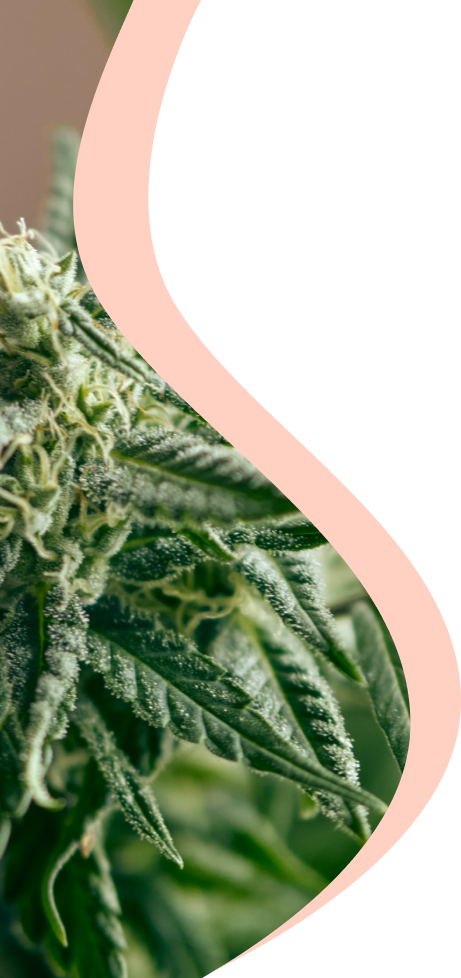Cannabis and chronic pain
Chronic pain affects 1 in 5 people in Australia and is limiting the activity of over 1.8M people daily. While we all experience pain at times, chronic pain is a disease that is often overlooked and misunderstood by those who don’t have the condition. Although there are many treatments, an increasing number of people are turning to cannabis to treat their chronic pain.
In this interview Dr Joe Kosterich covers the following topics:
- What are the signs of chronic pain? | 00:19
- When should individuals seek a doctor’s help for pain? | 01:29
- How is chronic pain diagnosed? | 02:26
- What are the traditional treatments for chronic pain? | 03:40
- Pharmacological treatments (ie opioids) | 05:07
- What are some of the side effects of traditional treatments? | 06:11
- Can cannabis help treat chronic pain? | 07:52
- Is cannabis prescribed for chronic pain in Australia?
- What types of chronic pain can cannabis help with? | 09:26
- Does cannabis without THC help with pain? | 10:05
- How does THC help with pain relief? | 11:55
- How does CBD oil help with chronic pain? | 12:32
- What are the side effects of cannabis for chronic pain? | 13:42
- Differences between CBD & THC side effects. | 14:46
- What type of cannabis is normally prescribed for chronic pain? | 15:50
- Topicals and transdermals for chronic pain. | 18:58
- Is there a specific dosage of CBD or THC for chronic pain? | 20:24
- What does the scientific evidence say about cannabis for chronic pain? | 21:21
What are the signs of chronic pain?
Chronic pain is defined as pain that lasts for more than three months. There are numerous types of chronic non-cancer pain. Some of the better known types of chronic pain are:
- Arthritic pain
- Back pain
- Fibromyalgia
- Headaches & migraines
- Musculoskeletal
- Neuropathic pain
Explaining signs of chronic pain is difficult because it depends on what type of chronic pain you’re experiencing. For example, if you have chronic low back pain you may experience pain in the lower back and it may run down the leg as well. People can experience pain in different parts of their body due to a problem in their neck. Some people get chronic pain post surgery. Other people have diseases of which chronic pain is a symptom (ie inflammatory bowel disease).
Pain is an unpleasant sensation in the body. It can affect any part of the body and the way that people experience it is different for each person.
When should individuals seek a doctor’s help for pain?
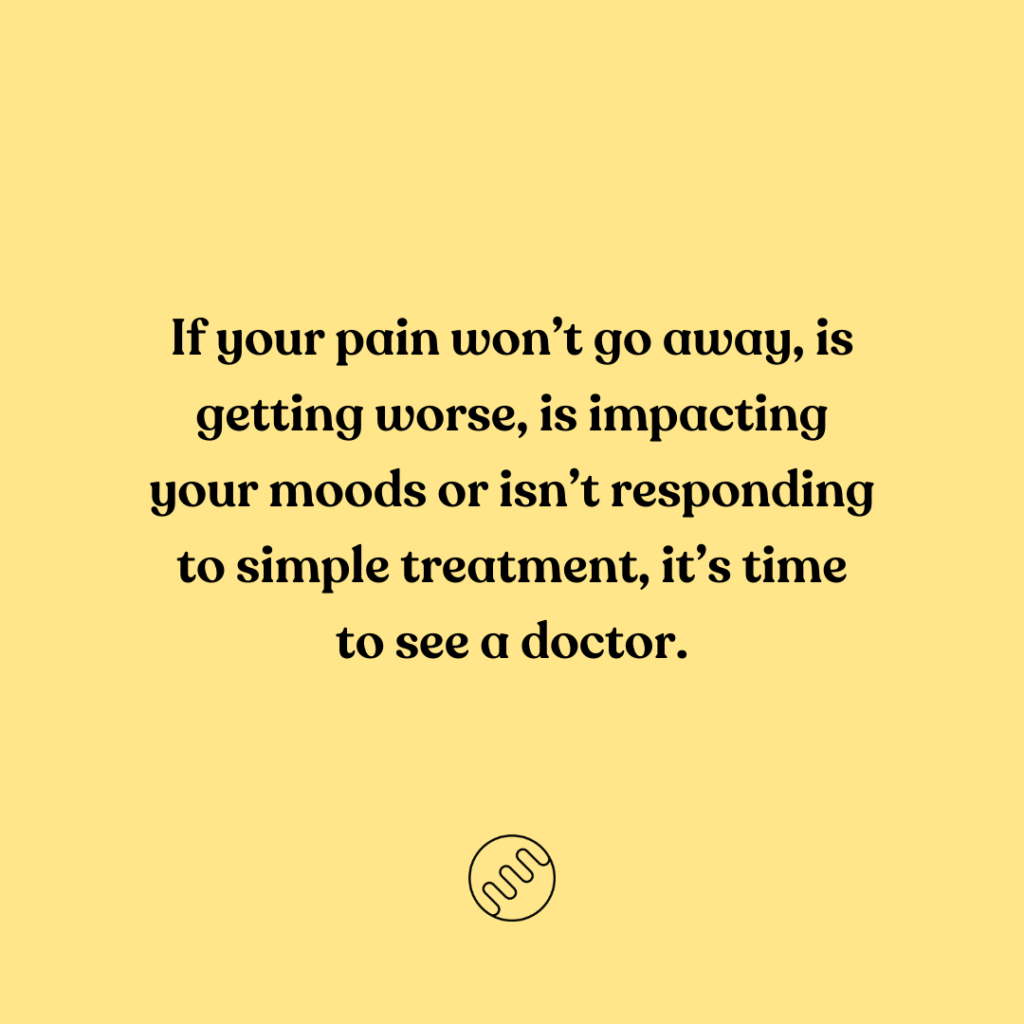
There is no hard and fast rule for this. The real questions you need to ask yourself are, “How is the pain affecting me,” and “Does it make sense that the pain is still there?”
The best way to explain this is with examples. If you have a headache and take some paracetamol and the pain goes away then there’s no need to go to the doctor. On the other hand, if you start to get a sore throat and that lasts for a few days then you might start thinking about seeing a doctor.
Now, let’s say that you have appendicitis and you get your appendix removed. You’d expect the pain to go away because the cause of the pain is gone. With chronic pain, it may be the case that despite treatment, the pain doesn’t subside. It can also be the case that no particular treatable cause is found – for example, this can be true for fibromyalgia patients.
So, if you have an ongoing symptom of pain that won’t go away, is getting worse, is impacting your moods or isn’t responding to simple treatment, it’s time to see a doctor.
How is chronic pain diagnosed?
Chronic pain is generally diagnosed when the pain has existed for a minimum of three months (some say six months) and where treatment directed at the underlying cause of the pain is not taking effect.
There are questionnaires that can help physicians establish the types and severity of pain, however there isn’t a formula or framework for diagnosing chronic pain.
What are the traditional treatments for chronic pain?
With chronic pain, the goal is always to start by treating the underlying condition, not just the pain symptom. For some conditions that cause chronic pain, there are specific medications that treat the condition. For some, treating the underlying condition provides a good response and will help decrease pain levels.
Chronic pain can often be the result of previous injuries. The easiest way to talk about treatments for these types of conditions is to break them out into:
- Surgical
- Non-surgical
Surgery is not generally the first choice. So, when we look at non-surgical treatments we can then break that down into:
- Physical treatments (massage, physiotherapy, etc.)
- Over the counter medications (usually nonsteroidal anti-inflammatory drugs)
- Prescription medications (opioids and off label)
Prescription Medications
Opiate medications fall into two categories: short term and long term use medications. The other type of medications that are sometimes prescribed are antidepressants or antiepileptic medications. When medications for other conditions are prescribed it’s called ‘off label’ prescribing.
There are so many options because people respond differently to these medications, some will work and some won’t.
What are some of the side effects of traditional treatments?
It’s important to start by saying that there is not a medication on the market that doesn’t have side effects. Even over the counter medications like paracetamol can have negative side effects.
Anti-inflammatory tablets as a group can cause an upset stomach to the point of nausea. Some anti-inflammatories, including ibuprofen, can affect the kidneys and blood pressure.
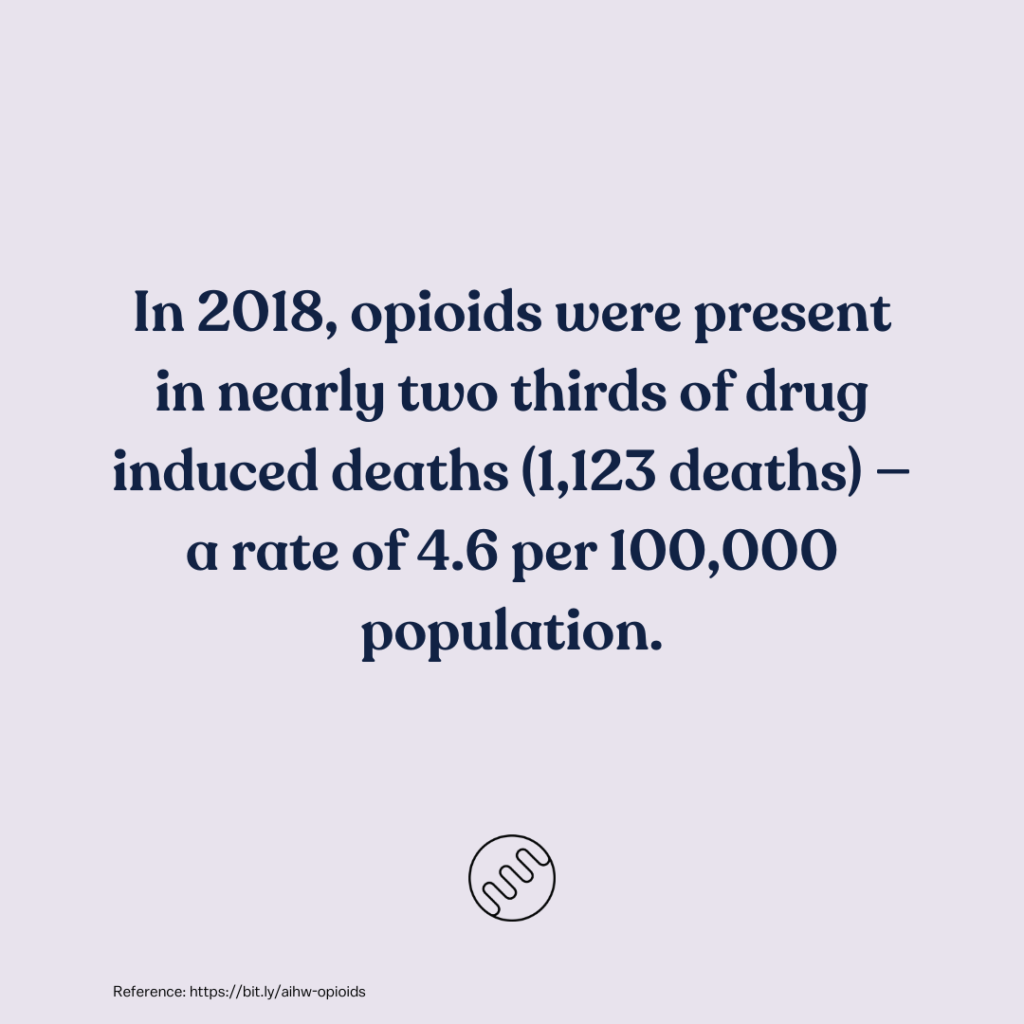
There are a significant number of side effects associated with opioids. However, not all opioids are bad. They do have a place in the treatment of chronic pain. The two side effects most prevalent in opioid patients are constipation and fogginess. Addiction and fatal overdose potential are also quite big problems with opiates.
“In 2018, opioids were present in nearly two-thirds of drug-induced deaths (64.5% or 1,123 deaths) — a rate of 4.6 per 100,000 population.”
reference
The other drug that’s prescribed for chronic nerve pain is Pregabalin. Similarly to the opiates, people often say they feel strange or foggy.
Can cannabis treat chronic pain?
Yes, cannabis is used to treat chronic pain. There are multiple studies that show cannabis can play a role in treatment of chronic pain for some patients.
Multiple studies prove that cannabis can treat pain. One meta analysis shows that there is moderate evidence that cannabis can treat chronic pain with limited adverse events. Another study shows that cannabinoid treatment improves both patient perception of pain and a reduction in opioid use.
Is cannabis prescribed for chronic pain in Australia?
Yes, cannabis can be prescribed for chronic pain in Australia. Chronic non-cancer pain is the number one category for medical cannabis approvals in Australia. Medical cannabis can be prescribed by any GP in Australia with few state by state limitations.
To be eligible for medical cannabis, you must have a medical condition for which your current treatment is not working, or giving you the pain relief you need. Cannabis is neither a first line or second line treatment for pain in Australia. While you don’t have to exhaust all other options, you will need to have tried multiple treatments before being approved for medical cannabis.
What types of pain can cannabis help with?
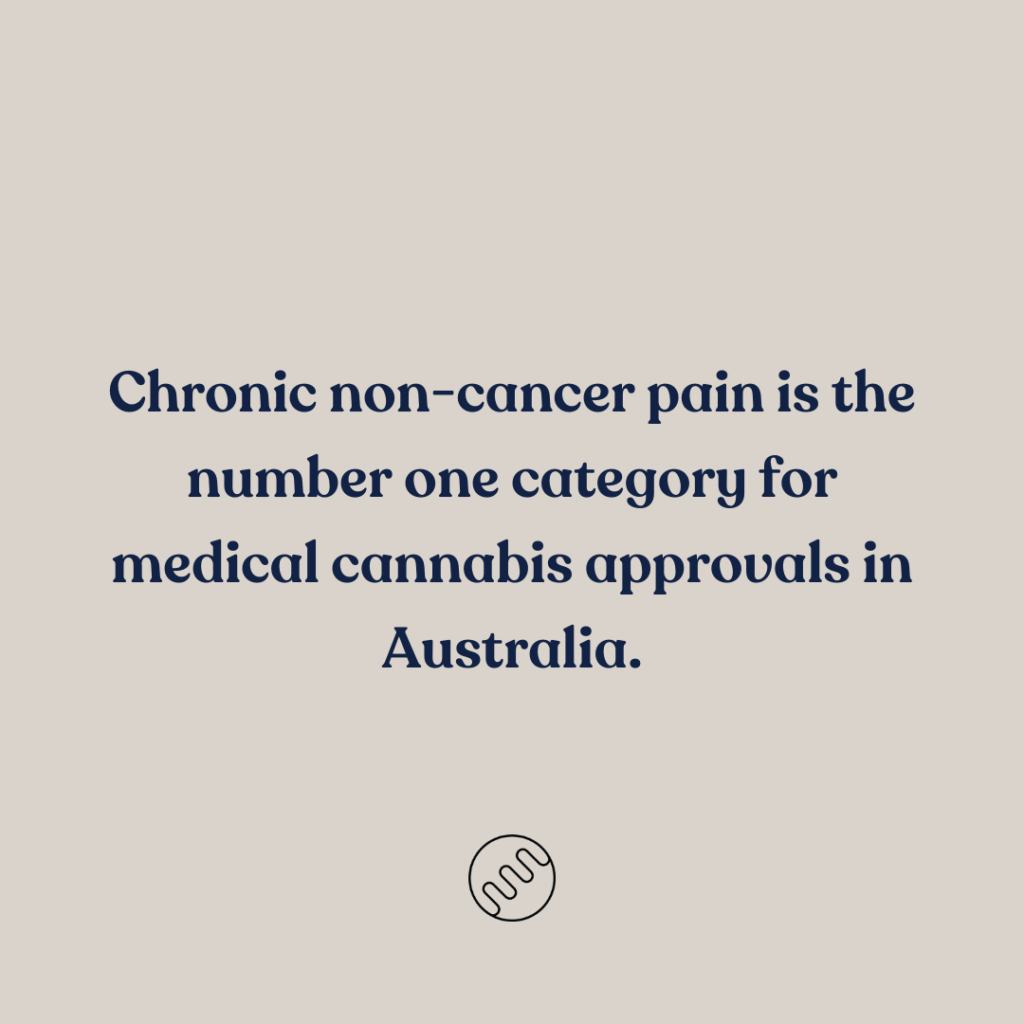
The TGA has approved medical cannabis for over 130 different conditions. The condition with the most scientific evidence for medical cannabis treatment is nerve pain. Other types of pain cannabis may treat are:
- Musculoskeletal pain
- Arthritic pain
- Cancer pain
There is however no specific list of types of pain for which the TGA approves medical cannabis. So, if you feel that cannabis might be right for your chronic pain or symptoms, please consult a healthcare professional.
Cannabinoids for pain relief
Both cannabidiol, CBD, and Delta-9-tetrahydrocannabinol, THC, can help with pain relief independently or together. Doctors may prescribe CBD or THC individually or in some combination. Research has also shown that different types of cannabis may be better for certain types of pain.
Neither of these cannabinoids is guaranteed to help treat pain. Like any other medication, cannabis doesn’t work for everyone.
Scientists believe that in some cases, using CBD and THC together can have a better overall impact on symptoms. This theory is called the entourage effect.
How does THC help with pain relief?
Delta-9-tetrahydrocannabinol, THC, also has an analgesic or pain relieving effect. In fact, most of the scientific research on cannabis and chronic pain has been done with THC or a THC and CBD combination.
It’s believed that THC works directly on your cannabinoid receptors and directly helps with the passing of messages between nerve cells. In doing so, it may be more beneficial in treatment of neuropathic pain.
Note: It’s illegal to drive with any THC in your system in Australia. Because of this, some doctors will shy away from using THC if you’re required to drive.
How does CBD oil help with pain relief?
Cannabidiol, CBD, is known to have an analgesic or pain relieving effect.
CBD doesn’t work directly on the CB1 & CB2 cannabinoid receptors in the body; it’s more of a regulator.
While we don’t know exactly how CBD works, we believe that it interacts on cannabinoid receptors indirectly and influences other receptors and messaging in the brain. Somehow CBD appears to be doing something to the pain signals sent and received by our bodies which can, in some people, reduce the feeling of pain.
CBD is usually the starting point for pain relief.
What are the side effects of cannabis for chronic pain?
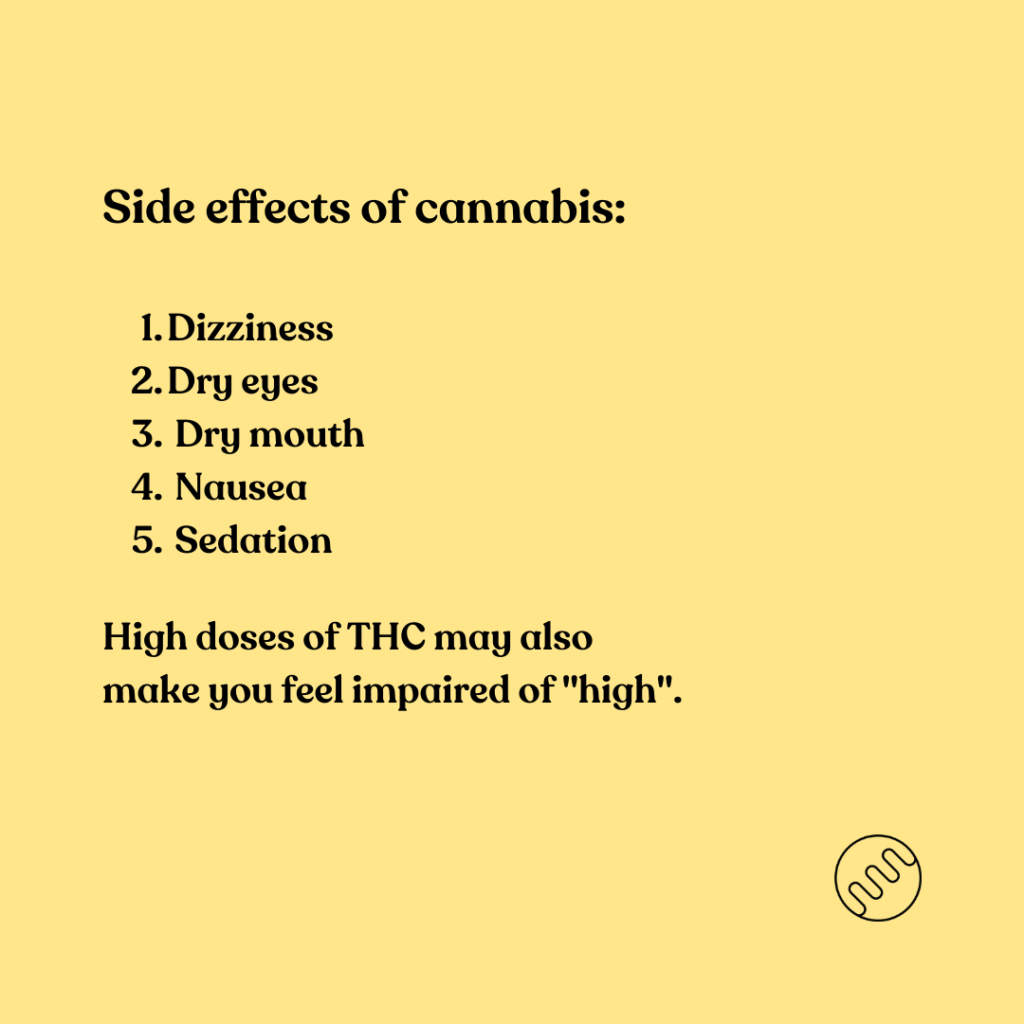
Medicinal cannabis, like all treatments, can have side effects. While some people experience side effects others do not. Here’s a list of side effects:
- Dry eyes
- Dry mouth
- Nausea
- Dizziness
- Sedation
CBD often has a calming effect which is why it can be used to treat anxiety and depression. However, CBD doesn’t tend to be sedating. You also won’t have any sort of impairment.
With THC, depending on your dose, you may experience some impairment. Too much THC can also cause anxiety, however, when using a medical cannabis oil it’s easy to manage your doses to limit side effects.
Overall, cannabis is a relatively benign medication with regard to side effects.
What type of cannabis is normally prescribed for chronic pain?
Oral formulations (an oil or tincture) are the most commonly used in Australia. A combination of CBD and THC are likely to work best for chronic pain.
Having a combination of CBD and THC means you’ll get the individual benefits of both cannabinoids as well as the enhanced effect of the two. There’s also a theory that if you have the two cannabinoids combined, you may need less cannabis to get a similar effect. This would be better for your body and your wallet.
Cannabis is not a first line treatment, and higher THC medications are not a first line cannabis treatment. While you may receive a product with a low THC to CBD ratio, higher THC products are often prescribed when your initial medication isn’t working, or you need to take larger doses to achieve the desired effect.
For younger people who have developing brains and those who need to drive CBD is a logical starting point.
Breakthrough symptoms
Some people with pain get breakthrough symptoms, or rapid onset pain. For some conditions, breakthrough symptoms may be treated with a vaporised flower. While this may be an option, with a condition like chronic pain, the goal is to maintain an even concentration of cannabinoid in the bloodstream, so you don’t experience breakthrough symptoms.
One way of managing breakthrough symptoms in chronic pain is to take doses of your medication throughout the day.
It is important to note that cannabis interacts with people’s bodies differently; there is no one size fits all.
Tell us about topicals and transdermal patches for treating pain.
Unfortunately, cannabis topicals and transdermals are not currently available in Australia.
Overseas however, there are topical local anesthetic gels to treat local pain. Topicals are medications absorbed through the skin. One of the advantages of a topical is that cannabis absorption through the skin allows you to avoid the first pass effect. The first pass effect is where a medication must pass through your stomach and liver before the medical benefits take effect. This often means you lose some of the medicinal effect.
Is there a specific dosage of CBD or THC for chronic pain?
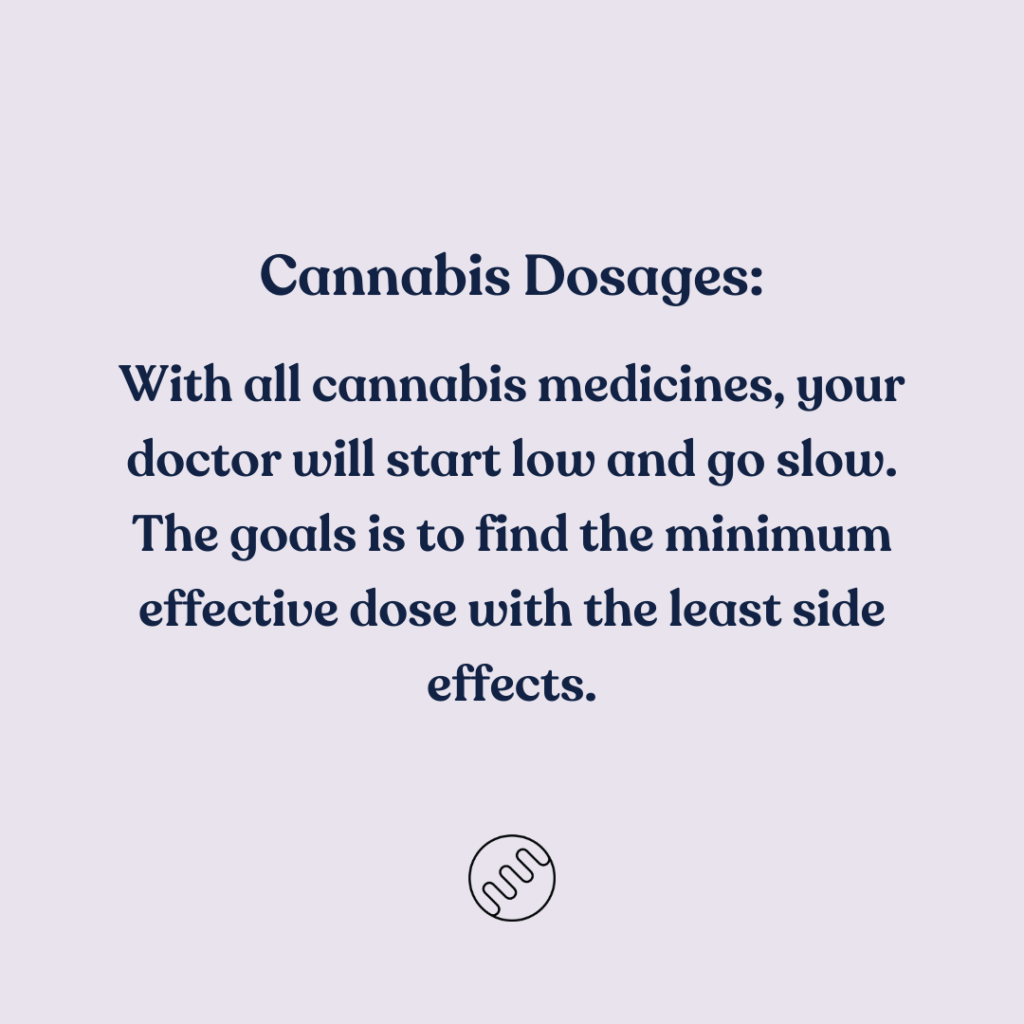
No. With all cannabis medicines, your doctor will start low and go slow. Generally with an oil formulation you’ll begin with a quarter or half a mil depending on the strength of your medication.
The goal for all cannabis medication is to titrate upwards to a point where you’re getting an adequate effect with limited to no side effects. This process to identify ideal dosage is the same rationale with any medication.
You may take it once a day or a couple of times a day. You may take it only in the morning or maybe a CBD in the morning and THC in the evening. Cannabis is a very personalised medicine; only you and your doctor will know what’s right for you.
What does the research say about cannabis and chronic pain?
The research says that cannabis has a role in the treatment of chronic pain. There is research that shows cannabis improving a number of types of chronic pain.
To date have been no clinical trials looking at CBD only products for pain. The pain-research space is dominated by CBD:THC balanced cannabis or THC only (ie Dronabinol, Nabilone), and THC-dominant smoked cannabis.
In Australia, cannabis is not a first line treatment and in many cases not a second line treatment. It’s not going to work for everyone and it’s not necessarily going to take all the pain away. It may help improve people’s pain and quality of life.
Conclusion
Cannabis is used to treat many types of chronic pain in Australia. Where there is still a taboo about medical cannabis and cannabis in general, both published research and observational studies show an increasing place for cannabis as a medicine.
The current legislation in Australia also tells us that cannabis has a role in the treatment of chronic pain. Cannabis can be used when other treatments have failed or caused unacceptable side effects. If you think cannabis might be right for you, please consult your GP or another healthcare professional.


